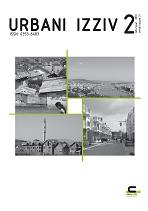Housing bubble burst or credit crunch effect? Slovenia’s housing market
Housing bubble burst or credit crunch effect? Slovenia’s housing market
Author(s): Richard SendiSubject(s): Social Sciences
Published by: Urbanistični inštitut Republike Slovenije
Keywords: global financial crisis; housing bubble; credit crunch; housing finance; housing supply and demand; housing market
Summary/Abstract: As defined by the Investment Dictionary, housing bubbles usually start with an increase in demand in the face of limited supply, which takes a relatively long period of time to replenish and increase. At some point, however, demand decreases or stagnates at the same time supply increases, resulting in a sharp drop in prices known as a bubble burst. During the last two decades, the Slovenian housing market has been characterised by a very high housing demand under circumstances of a limited supply, which may primarily be attributed to the effects of the housing reforms introduced in the early 1990s. As is always the case in such situations, speculators seeking huge quick profits drove house prices to unsustainable levels relative to average incomes. Like in many countries throughout the world, the situation has recently changed. Statistical records show a slight decline in the growth of house prices and there are signs of stagnation in housing demand. These developments have prompted various (contrasting) viewpoints among housing experts. Some are convinced that the bubble has finally burst because house prices had reached the highest possible levels that buyers were willing to pay. On the other hand, others argue that house prices would have continued to grow had the credit crunch not occurred, which resulted in the reduced availability of mortgages and therefore depressed demand. These two viewpoints represent the main hypotheses of this discussion. This paper reviews the housing market circumstances over the last two decades and identifies facts that may substantiate or disprove these hypotheses.
Journal: Urbani izziv
- Issue Year: 21/2010
- Issue No: 2
- Page Range: 96-105
- Page Count: 10
- Language: English

